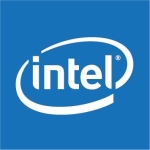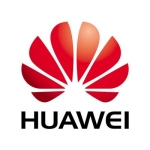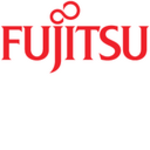Dell PowerEdge Rack Servers are convenient. When we have a problem, we have a hotline that is efficient. They are also reliable.
Dell PowerEdge Rack Servers fit our resiliency needs. If we want to make them very resilient, we have presales engineers who are also technical. They are competent and able to help us.
The servers are fine in terms of energy consumption, but until now, we have not been very concerned about that.
They are aligned with our sustainability goals. This is very important for us when we buy a server. Previously, we used to get a five-year guarantee, and now, it is a seven-year guarantee, but we still have some servers working fine after ten years. We do replace them from time to time, but we do not have any problem with reliability. As far as the environment is concerned, we know that when we buy a machine, it will last a long time.
Dell PowerEdge Rack Servers have helped to reduce unplanned production downtime. They are very reliable, and we usually function by doubling up. We use a couple of servers, and we move our VM from one server to another between two buildings. Because the servers never, or very rarely, break down, we have a very resilient architecture.
The OpenManage console has not really affected our IT staff’s productivity.
We were working with both Dell and HPE. We preferred Dell. I prefer not to do any counter-advertising, but HPE was not working out very well with regard to customer services, getting a quote, or even anything technical. We prefer Dell products, but we would prefer the prices of the servers to be a bit lower.
We did not have many issues with HPE at a technical level, but we have had some issues when communicating with them, even at the presales level. We could not even connect to their server to get a quote. It was so complicated. There were references that we did not understand. If we have to install a particular disk, we must buy some specific accessory or another, whereas, with Dell, if we want something, we just tell them, and we get the configuration.
In addition, for Dell’s website, we can use any browser, whereas with HPE, it is Chrome one day and something else another day. We use Firefox, and it does not work. We use something else, and it does not work either. Dell is very open.
Other than these two brands, I do not have knowledge of any other brand. We have had integrators for homemade servers, but that was a long time ago. It is usually Dell or HPE. Dell has about ¾th of the market.
I am involved in the deployment of these servers. I work in a research laboratory. We are about 100 people, but we are a part of the Paris Observatory. It is like a university with about 800 people. We all work daily together with the IT teams.
I am responsible for handling presales with the technical and salespeople from Dell or HPE. We are not in charge of the orders. We handle the equipment and install the machines, and we organize the rollout of the infrastructure, VMs, and all that. Afterwards, we also handle interfacing with users.
The initial setup is rather simple. We do not have any real problems, and even when we have had a problem, it was fairly quickly resolved.
In terms of implementation strategy, when you are a small company, there is no big strategy like big companies. We get there, we install it, and it works. There is no strategy.
I would rate Dell PowerEdge Rack Servers a nine out of ten.
Foreign Language:(French)
Un support efficace, une maintenance facile et un bon rapport qualité-prix
Depuis combien de temps utilisez-vous les serveurs Dell PowerEdge Rack?
J’utilise les serveurs Dell PowerEdge Rack depuis environ 15 ans.
Quel est votre cas d’utilisation principal pour cette solution? (Décrivez votre environnement).
On utilise les serveurs Dell PowerEdge Rack pour du stockage de données, des traitements de données et des calculs.
On doit gérer les données et on a des contraintes de sécurité. On nous impose de ne pas utiliser tout ce qui est Cloud. On fait tout en local.
Comment est-ce que les serveurs Dell PowerEdge Rack ont amélioré votre organisation? Si ce n’est pas le cas, expliquez pourquoi.
Les serveurs Dell PowerEdge Rack sont pratiques. Lorsque nous avons un problème, nous avons aussi une assistance téléphonique qui est performante. Ils sont également fiables.
Les serveurs Dell PowerEdge Rack correspondent à nos besoins de résilience. Si on veut les rendre vraiment très résilient, on a des ingénieurs qui sont également des technico-commerciaux avant-vente. Ils sont très compétents et peuvent nous aider.
Les serveurs Dell PowerEdge Rack sont bien en termes de consommation d'énergie mais pour l’instant, on ne s’en est pas trop préoccupés.
Les serveurs Dell PowerEdge Rack sont alignés sur nos objectifs de durabilité. C’est très important pour nous lorsque nous achetons un serveur. Avant, on recevait une garantie de cinq ans et maintenant, la garantie est de sept ans mais nous avons encore des serveurs qui tournent toujours après dix ans. On les remplace de temps en temps mais on n’a vraiment pas de problème de fiabilité. Au niveau écologique, on sait que lorsqu’on achète une machine, elle va durer longtemps.
Les serveurs Dell PowerEdge Rack ont permis de réduire les temps d’arrêt de production imprévus. Ils sont très fiables et généralement, on marche en doublant. On prend un couple de serveurs et on déplace nos VM d’un serveur sur l’autre et sur deux bâtiments. Les serveurs ne tombant jamais en panne, ou très rarement, on obtient une architecture résiliente.
La console OpenManage n’a pas vraiment affecté la productivité de notre personnel informatique.
Quelles fonctionnalités avez-vous trouvé les plus utiles et pourquoi?
La maintenance et le contrôle à distance sont utiles.
Dans quels domaines les serveurs Dell PowerEdge Rack pourraient-ils être améliorés?
Le problème que nous avons eu n’est pas un problème technique mais plutôt économique. Autrement dit, on travaille avec des marchés nationaux et HP, ou HP Enterprise est moins cher. Dell aurait donc pu faire un effort au niveau du prix.
Par exemple, il y a deux ou trois ans, on parlait avec un commercial ou un ingénieur avant-vente sur le remplacement de notre infrastructure des serveurs de fichiers mais le prix qu’on nous a proposé était très élevé.
Avez-vous utilisé une solution différente auparavant et si c’est le cas, pourquoi avez-vous changé?
On travaillait avec Dell et HPE. On préférait Dell. Je préfère ne pas faire de la contre publicité mais ça ne marchait pas très bien avec HPE aussi bien au niveau service client, que de faire un devis ou même pour quoi que ce soit de technique. On préfère les produits Dell mais on préférerait que les prix des serveurs soient un peu plus bas.
On n’avait pas vraiment de soucis avec HPE au niveau technique mais on avait du mal à communiquer avec eux, même au niveau avant-ventes. On n’arrivait même plus à se connecter sur leurs serveurs pour faire un devis. C'était tellement compliqué. Il y avait des références qu’on ne comprenait pas. Si on doit mettre un certain disque, il faut acheter tel ou tel accessoire particulier. Alors que chez Dell, si nous voulons quelque chose, il suffit de leur dire et on a la configuration.
En plus, avec le site web de Dell, on peut utiliser n’importe quel navigateur alors que chez HPE, un jour c’est Chrome et un autre jour, c’est autre chose. Ou on a Firefox et ça ne marche pas alors on prend quelque chose d’autre et ça ne marche pas non plus. Dell est, par contre, vraiment très ouvert.
Je n’ai pas vraiment de connaissances sur d’autres marques à part ces deux-là. On a eu des intégrateurs pour des serveurs faits maison mais il y a longtemps. C’est généralement Dell ou HPE. C’est Dell qui a le marché les ¾ du temps.
Que conseillez-vous en ce qui concerne les coûts d’installation, les tarifs et/ou les licences?
Ils sont chers. Au niveau des licences, ça va. C’est plutôt au niveau des prix du matériel.
Des collègues dans d’autres universités ont fait des comparatifs et pour une configuration équivalente, il y a avait facilement jusqu'à 10% à 20% de réduction chez HPE, par rapport aux prix Dell.
Quelles sont vos impressions sur la scalabilité de cette solution?
Nous sommes un petit laboratoire de recherche mais nous avons quelques équipes qui travaillent ensemble. Il nous arrive de regrouper tout le matériel informatique ensemble et d’acheter des extensions et tout ce qu’il faut.
Au niveau scalabilité, il n’y a pas de problème. C’est très évolutif mais c’est très cher. Par rapport à nos besoins, c’est vraiment surévalué. Je suis dans un campus avec plusieurs unités mais on doit fusionner d’ici 2025, tout remettre ensemble et travailler avec des gens que je côtoyais juste à la cantine. On verra bien à ce moment si c’est vraiment très scalable et si on parviendra à tout remettre ensemble.
Quelles sont vos impressions au niveau de la stabilité de cette solution?
Ils sont stables. Il n’y a pas de temps morts, ni de panne.
Avez-vous constaté un RSI (Retour Sur Investissement? Si oui, dans quel sens (p. ex. mesures/points de données)?
On n’est pas des commerciaux donc, c’est difficile de parler d’un retour sur investissement mais quand on achète un serveur Dell, on rentre vraiment dans nos frais. On sait qu’on n’aura pas de problème et que ça va fonctionner. On va mettre des VMs et on va faire tout ce qu’il faut. Quand je demande des crédits à mon responsable, il sait que le serveur va marcher pendant tant d’années. On n’aura pas de soucis et je n’aurai pas plus d’argent à demander. Parfois, on change des anciennes machines mais uniquement parce que les nouvelles seront moins énergivores et on pourra mettre plus de VMs sur un seul serveur. Donc, au niveau écologique, on consomme moins d'énergie. C’est parfois la seule raison pour laquelle on change de vieux serveurs. Ils marchent encore mais ils consomment plus d'énergie que les nouveaux.
La configuration initiale était-elle simple ou complexe et de quelle manière?
Je suis impliqué dans le déploiement de ces serveurs. Je travaille dans un laboratoire de recherche. Nous sommes une centaine de personnes mais nous sommes intégrés à l’Observatoire de Paris. C’est comme une université mais avec environ 800 personnes. On travaille ensemble avec toutes les équipes informatiques.
Je suis responsable des choix avant-vente avec l'équipe de personnel technico-commerciaux de Dell ou HPE. On ne passe pas les commandes. On reçoit le matériel, on installe les machines et on organise le déploiement de l’infrastructure, des VMs et tout le reste. Et après, on assure l’interface avec les utilisateurs.
Le déploiement inicial est plutôt simple. On n’a pas vraiment de problèmes et même quand on a eu des problèmes, ça s'est résolu assez rapidement.
En termes de stratégie de mise en œuvre, quand on est une petite structure, il n’y a pas vraiment de grande stratégie comme pour dans les grosses sociétés. On arrive, on installe et ça marche. Il n’y a pas de stratégie.
Vous avez fait l’implémentation avec un revendeur ou votre propre équipe? Si vous avez utilisé un revendeur, comment évalueriez-vous leur niveau d’expertise?
On fait l’implémentation nous-mêmes. On a des intégrateurs mais pour des solutions tierce-parties. On a pris une licence pour des logiciels de sauvegarde au niveau du campus. On travaille avec d’autres sociétés pour cela mais au niveau du matériel et tout ce qui est infrastructure Dell, on n’a pas besoin d’aide. Ça marche très bien et il n’y a aucun problème. On sait que c’est simple.
Décrivez votre expérience avec le service client et le support.
C’est assez différent en ce qui concerne les PowerEdge. C’est encore différent pour les PCs. Pour les serveurs, le support est vraiment bien. Je leur mettrai un huit sur dix. On ne sait pas pourquoi mais à un certain moment, il y a eu des périodes où le support ne répondait pas assez vite ou ça passait d’un niveau à l'autre. Il faut avoir de l’expertise si on a quelque chose qui ne fonctionne pas correctement mais c’est par périodes. Ce genre de problème peut apparaître subitement au bout de six mois et disparaître six mois plus tard. Tout fonctionne bien. Il n’y a plus de problèmes avec le service clients.
Comment est-ce que vous évaluerez le service et le support pour cette solution sur une échelle de 1 à10?
8
Sur une échelle de 1 à 10 (1=le pire, 10=le meilleur), comment est-ce que vous évaluerez les serveurs Dell PowerEdge Rack? Veuillez donner vos raisons.
Je donnerais aux serveurs Dell PowerEdge Rack une note de neuf sur dix.












